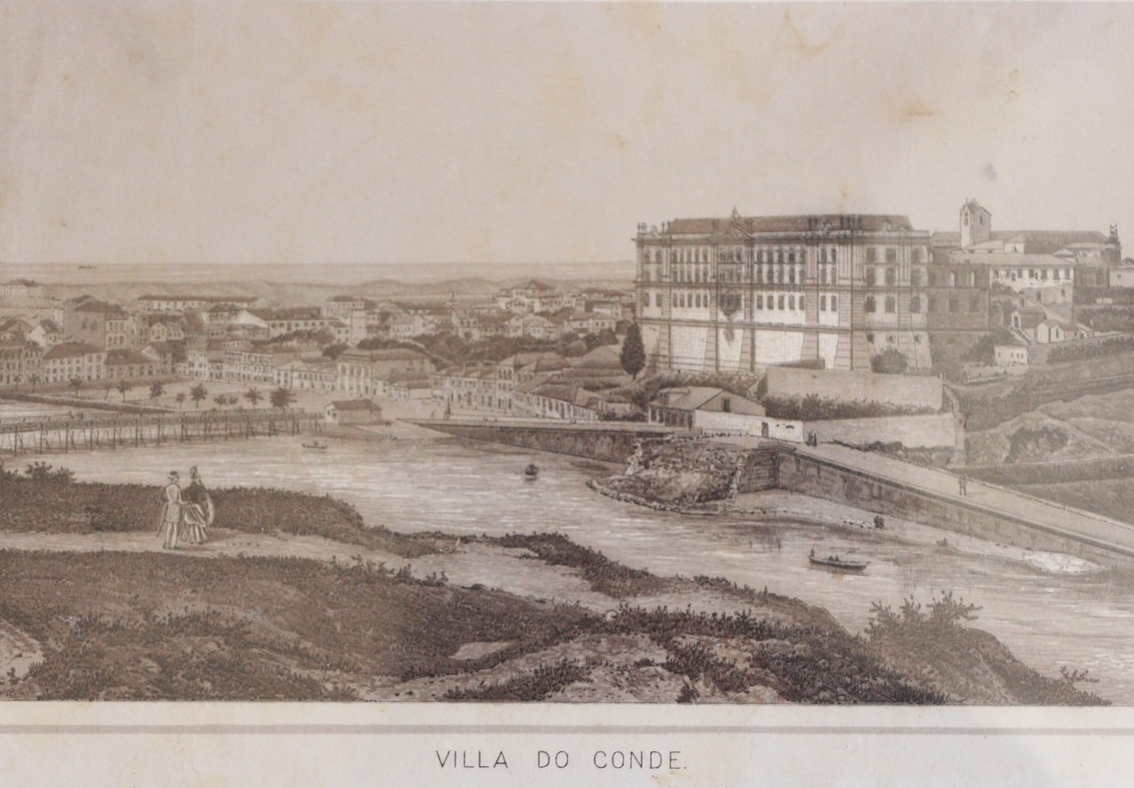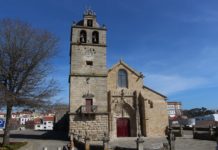
The settlement of Vila do Conde has a long history, which can be proven by the tumuli and simple dolmens found in the municipality, dating from about 5000 BC to 3000 BC. Well before that time, the area of the present Vila do Conde would have been visited by nomadic peoples, who here left pebble tools, which can come from the Paleolithic period (c. 10000 BC).
The earliest document referring to the “Villa de Comite” dates from the tenth century, more precisely from March 26th 953 of the era of Christ, and is a deed of sale by Flamula Pelagius (Chamoa Pais) to Abbot Gonta and his brothers and sisters from the Monsatery of Guimarães. Two villas are part of this sale; the Villa de Comite (eventually Vila do Conde) and Villa Quintanella (nowadays Quintela, Argivai, Póvoa de Varzim). In addition to these, there are also references to confrontations with other villas, namely Villa Fromarici (place of Formariz, Villa do Conde), Villa Euracini (Póvoa de Varzim), Villa Tauquinia (Touguinha), Villa Argevadi (Argivai) and Villa Anserici (also in Argivai). This document helps us to reconstruct the history of Vila do Conde in previous centuries, albeit with some margin of error.
There was a celtic hillfort, called “Hillfort of St. John“, on the hill on the north bank of the Ave river, where the building of the now extinct Monastery of Saint Clare is located. This hillfort settlement would have originated in the Celtic occupation of the Iberian Peninsula around the 8th century BC. The hillfort would already have, at the time of that writing, a church dedicated to Saint John the Evangelist, possibly built during the Suebi occupation (6th century AD). The Suebi themselves, at the council of Lugo in 569, referred to its existence when dividing their kingdom into parishes and dioceses. The diocese of Braga would have its limit to the south “following the Ave river until the hillfort”. These delimitations were recorded in the “Parochiale Suevorum” and reproduced in the “Liber Fidei” of the archbishopric of Braga.
In the eleventh century, in 1059, Villa de Comite was still in possession of the Monastery of Guimarães, as it was part of the inventory of its goods and churches, transcribed by Alexandre Herculano in the nineteenth century. From this inventory, we get the first reference to another religious monument: the “heremita Sancti Juliani Martyris”, in the place where today you can see the Chapel of Our Lady of Guidance.
Somewhere in the twelfth century, “Meem Paaez Bofinho”, Count D. Mendo Pais Roufino de Azevedo, will have administered this village. This fact lacks documentary evidence, even though Count D. Mendo was associated to the foundation of Vila do Conde during several centuries. This story was possibly perpetuated from generation to generation by the collective memories of the people of Vila do Conde, supported by the legend of the Count who would live in Azurara. As we mentioned, Flamula Pelagius had already named the area north of the Ave river as “Villa de Comité”, more than two centuries before.
In the early years of the thirteenth century, King D. Sancho I of Portugal gave these lands to his mistress, D. Maria Pais da Ribeira, “the Riparian”, and her children.
One of her great-great-great-granddaughters, D. Teresa Martins, and her husband, D. Afonso Sanches, illegitimate son of King D. Dinis, founded in 1318 the Royal Monastery of Saint Clare, still today a symbol of the city.
Somewhere in the second half of the fourteenth century, the landlord was transferred to the monastery, with civil and criminal jurisdiction, giving it an enormous political and financial power at the local level.
Due to the fact that it possesses an adequate geographic location, Vila do Conde played a preponderant role during all the time of the Portuguese Age of Discoveries. While in the medieval period the greatest sources of income came from salt evaporation ponds and fishing activities, another occupation grew exponentially at this time: shipbuilding. Vila do Conde took advantage of the needs inherent to the maritime expansion, namely the production of new vessels and sails. The activity of the shipbuilding yards stretched along the south bank of the Ave.
D. Manuel, king of Portugal in the transition between the fifteenth and sixteenth centuries, visited Vila do Conde during a pilgrimage to Santiago de Compostela. Such an event would mark the near future of the locality.
With the support of King D. Manuel, the construction of the Matrice Church and new Town Hall was started. The center of the city was transferred from the “Old Square“, nowadays Largo Antero de Quental, to the “New Square”, the Vasco da Gama Square, and new accesses were created to connect this new hub to the riverside area.
Meanwhile, on September 10th 1516, the Manueline Foral was issued, establishing the rights and duties of the municipality and regulating the taxes paid by its grantee. In the case of Vila do Conde, the Monastery of Saint Clare.
In the seventeenth century, it is worth noting the construction of the Fort of Saint John the Baptist, even though the works began in the previous century and only definitely finished in the next one. The Chapel of Our Lady of Help was also erected at the beginning of this century, such as the Chapel of Saint Amarus, among others.
In the early eighteenth century, more precisely in 1714, the construction of the Aqueduct started, which connected a water source located in Terroso to the Monastery of Saint Clare, in a route of about 6 kms.
In 1793 the presumed first bridge over the Ave river between Vila do Conde and Azurara was inaugurated, baptized as Our Lady of the Snows bridge, which lasted only 28 years. Until then, the connection between the two banks of the river was feasible by means of a small ferry, owned by the Monastery of Saint Clare.
In the nineteenth century, the quick evolution of the town is notorious, not only within its old geographic limits, where the Royal Road and new link roads to the seaside (bathing neighbourhood) were opened, but also by the enormous expansion of these same limits, by annexing Azurara (a town and independent municipality until then) and several parishes that belonged to neighboring municipalities, namely Barcelos, Famalicão, Maia, Póvoa de Varzim and Bouças (Matosinhos). In the latest months of the century the Affonso Sanches Theater was opened to the public.
The twentieth century was, throughout the world, a time of great development in all areas, to which Vila do Conde was no exception. New streets and avenues, buildings and events transform the horizon of the future city. Of note, at a cultural level, is the construction of Neiva’s Cine-Theater and the remodeling of the Vasconcelos’ House, to create the Municipal Auditorium. Thousands and thousands of people are attracted every year by the Automobile Circuit, the National Handicraft Fair and the Short-Film Festival. In 1987, the elevation of Vila do Conde to a city was approved. The shipyards, which for several centuries dominated the north bank of the river, were transferred to Azurara on the south bank.
From the scarce years of the twenty-first century there is much to tell. Vila do Conde was chosen as one of the cities which took part of the Polis program. The Atlantic front was renewed, creating a cycleway that, starting near the Fort, extends to the north merging with Póvoa de Varzim’s. The number of parking lots multiplied, despite the fact that the motorway by the seaside between the Fort and the Bathing Beach was terminated. In this zone, the protection of the dunes between the beaches and the built-up area is strongly promoted. In the riverside area, a small port for recreational boats was built, adjacent to one of the city’s new symbols: the Sixteenth Century Carrack. The Theater and the Royal Customs had deep interventions and (re)opened to the public. Vila do Conde now has a place in the Guinness Book for producing the world’s largest bobbin lace. It also initiates a project aimed at applying for UNESCO’s Intangible Cultural Heritage: wooden shipbuilding, an ancient art, is the basis of the project “Um Porto para o Mundo” (A Port for the World).






